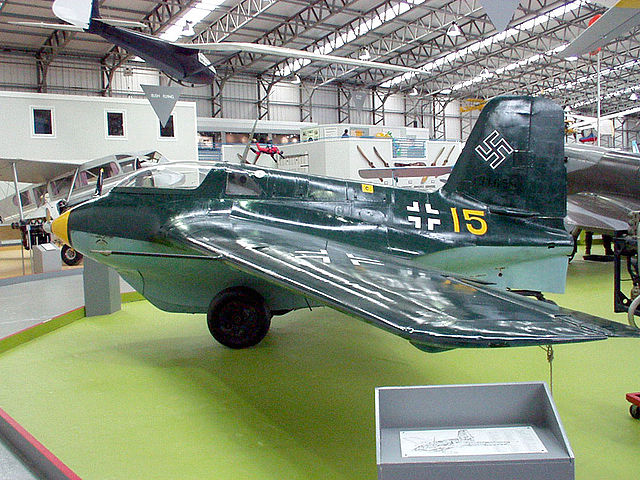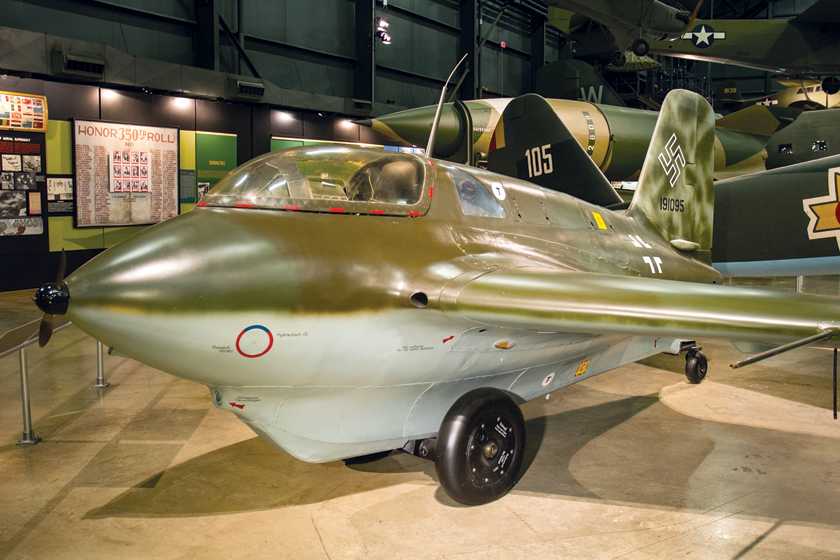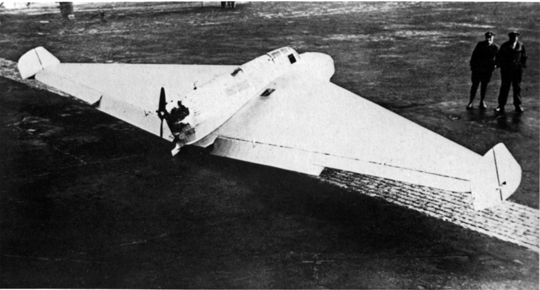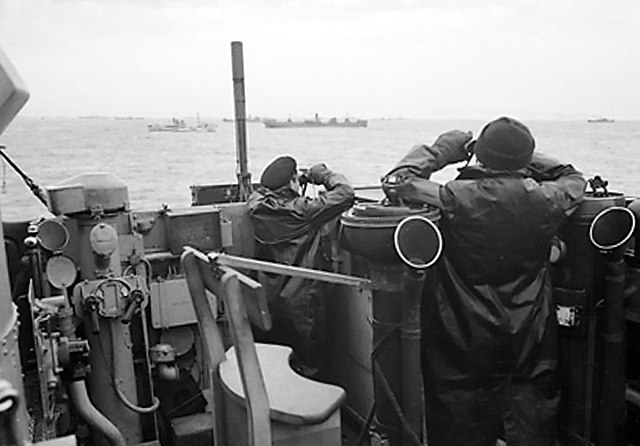
Jet fighter Messerschmitt Me 163 Komet part 1

Me 163 B-1a, W.Nr. 191095; The United States National Air Force Museum at Wright-Patterson AFB near Dayton, Ohio.
The Me 163 was the first combat missile-powered fighter during World War II. Daily raids by American four-engine heavy bombers systematically destroyed both German industrial centers as early as mid-1943, as well as, as part of terrorist raids, they demolished cities in the Reich, killing tens of thousands of civilians, which was to break the nation's morale. The material advantage of the American aviation was so great that the Luftwaffe command saw the only chance to overcome the crisis and stop the air raids using unconventional methods of defense. Quantities were to be contrasted with quality. Hence the ideas of converting fighter units into jet and missile planes, which, thanks to the superior performance, were to restore the Luftwaffe's air control over their home territory.
The genesis of the Me 163 fighter goes back to the 20s. A young constructor, Aleksander Martin Lippisch, born on November 2, 1898 in München (Munich), in 1925 took over the technical management of Rhön-Rositten-Gesellschaft (RRG, Rhön-Rositten Society) based at Wasserkuppe and began work on the development of tailless gliders .
The first AM Lippisch gliders were constructions from the Storch series (stork), Storch I from 1927, during tests, in 1929, the DKW engine with a power of 8 HP received . Another glider, the Storch II was a scaled down variant of the Storch I, while the Storch III was a two-seater, flown in 125, the Storch IV was a motorized version of its predecessor, and the Storch V was an improved variant of the single-seater that made its first flight in 125.
Meanwhile, in the second half of the 20s, interest in rocket propulsion increased in Germany. One of the pioneers of the new power source was the famous automotive industrialist Fritz von Opel, who began to support the Verein für Raumschifffahrt (VfR, Society for Spacecraft Travel). The head of the VfR was Max Valier, and the founder of the society was Hermann Oberth. Initially, members of the society believed that liquid fuel would be the most appropriate propulsion for rocket engines, unlike many other researchers who preferred solid fuels to be easier to use. Meanwhile, Max Valier decided that, for propaganda purposes, one should get involved in the design of an airplane, car, or other means of transport that would be powered by a solid-fuel rocket engine.

The successful debut of the Delta 1 aircraft took place in the summer of 1931.
Max Valier and Alexander Sander, a pyrotechnician from Warnemünde, constructed two types of gunpowder rockets, the first with fast burning to give the high initial velocity necessary for take-off, and the second with slow burning adequate thrust for a longer flight.
Since, according to most specialists, the best airframe that could receive a rocket propulsion was a tailless, in May 1928 Max Valier and Fritz von Opel met secretly with Alexander Lippisch on the Wasserkuppe to discuss the possibility of in-flight testing of a revolutionary new propulsion power source. Lippisch proposed to mount rocket motors in his tailless Ente (duck) glider, which he was developing simultaneously with the Storch glider.
On June 11, 1928, Fritz Stamer made the first flight at the controls of the Ente glider equipped with two Sander rockets of 20 kg each. The glider took off with a catapult equipped with rubber ropes. The first glider flight lasted only 35 seconds. In the second flight, after launching the rockets, the Stamer made a 180 ° turn and covered a distance of 1200 m in 70 seconds and landed safely at the take-off site. During the third flight, one of the rockets exploded and the rear part of the airframe caught fire, ending the tests.
Meanwhile, the German pilot, the Atlantic conqueror, Hermann Köhl, showed interest in the Lippisch designs and ordered the Delta I motor glider with an advance payment of RM 4200 as the cost of its purchase. The Delta I was powered by the British Bristol Cherub 30 HP engine and reached a speed of 145 km / h. The motor sailplane was a freestanding tailless with wings in a delta arrangement with a wooden structure with a two-person cabin and a pushing propeller. Its first glider flight took place in the summer of 1930, and its motor flight in May 1931. The development version of the Delta II remained on the drawing boards, was to be powered by a 20 HP engine. In 1932, the Delta III was built at the Fieseler plant, built in duplicate under the designation Fieseler F 3 Wespe (wasp). The airframe was difficult to fly and crashed on July 23, 1932 during one of the test flights. The pilot, Günter Groenhoff, was killed on the spot.
At the turn of 1933/34, the RRG headquarters was moved to Darmstadt-Griesheim, where the company became part of the Deutsche Forschungsanstalt für Segelflug (DFS), i.e. the German Research Institute for Shaft Flight. Already at DFS, another airframe was created, which was designated Delta IV a, and then its modified Delta IV b variant. The final variant was the Delta IV c with a 75 hp Pobjoy star engine with a pulling propeller. Dipl.-Ing. Frithjof Ursinus, Josef Hubert and Fritz Krämer. In 1936, the aircraft received an aviation authorization certificate and was registered as a two-seater sports plane.
